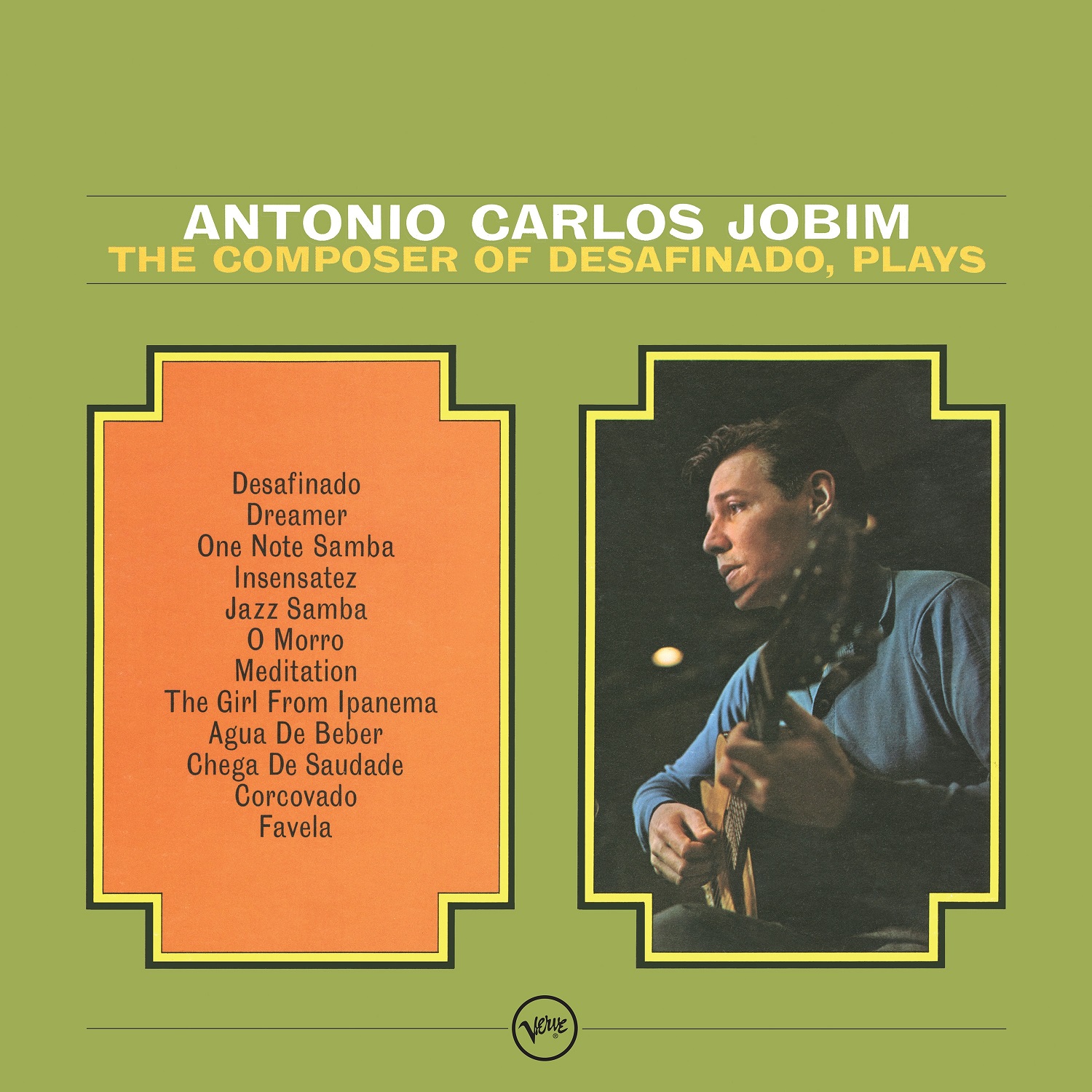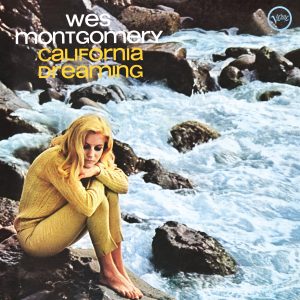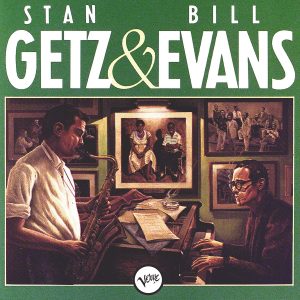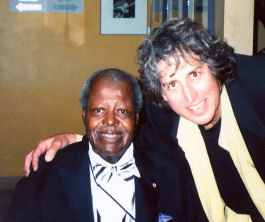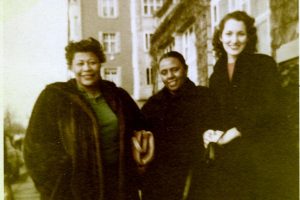FEATURING 180-GRAM VINYL REISSUES OF THE ICONIC LABELS’ CLASSIC ALBUMS; DAVID KESSEL ON VERVE RECORDS FOUNDER NORMAN GRANZ
By Harvey Kubernik © 2019
In 2019 Verve and Impulse! Records, together with UMe, launched their new series Vital Vinyl, a celebration of essential jazz LPs from the iconic labels’ enduring catalogs.
Throughout the year, the labels are making some of their most beloved must-have albums from the ‘50s, ‘60s and ‘70s available once again as non-limited editions LPs, pressed on audiophile grade 180-gram black vinyl and showcased with their original cover artwork, track listings and liner notes.
The records will be released in three batches with the first available today followed by the second on May 3 and the final installment on June 7.
Almost all major jazz artists are included within this series, from the joyful vocals of Ella Fitzgerald, Billie Holiday and Louis Armstrong to the Brazilian Jazz revolutions of Stan Getz, Charlie Byrd and Antonio Carlos Jobim, through to the powerful soloing of Charlie Parker, Bill Evans, Dizzy Gillespie, Coleman Hawkins, Jimmy Smith, Lester Young, Oscar Peterson, Ben Webster, Wes Montgomery and Gerry Mulligan.
The nine classic records that recently became available are Billie Holiday’s Songs For Distingué Lovers and Body and Soul, Coleman Hawkins & Ben Webster’s Coleman Hawkins Encounters Ben Webster, Ella Fitzgerald’s Mack The Knife: Ella In Berlin, Jimmy Smith’s The Cat, Antonio Carlos Jobim’s The Composer Of Desafinado Plays, Wes Montgomery’s California Dreaming.
May 3rd will see the release of Oscar Peterson’s We Get Requests and his collaboration with Lester Young, The President Plays With The Oscar Peterson Trio, Benny Carter’s Further Definitions, Gil Evans Orchestra’s Out Of The Cool, Dizzy Gillespie’s Swing Low, Sweet Cadillac, Roy Haynes’ Out of The Afternoon and Oliver Nelson’s The Blues and the Abstract Truth.
The series will conclude with the June 7th release of Sonny Rollins’ On Impulse!, Archie Shepp’s Fire Music, McCoy Tyner’s Inception, Ella Fitzgerald’s Sings The Cole Porter Songbook, Gerry Mulligan/Ben Webster’s Gerry Mulligan Meets Ben Webster, Charlie Parker/Dizzy Gillespie’s Bird And Diz and a pair of Charles Mingus records: The Black Saint And The Sinner Lady and Mingus Mingus Mingus Mingus Mingus.
In all, 40 titles comprise the Vital Vinyl series, making some of these albums available for the first time in years while others already in print will now be perennially available. Vital Vinyl is rounded out by 16 records already recently newly reissued including revered titles from Alice Coltrane, John Coltrane, Count Basie, Charlie Haden, Charlie Parker and Keith Jarrett, out now.
“These classic jazz albums that UMe is reissuing on vinyl were originally released on vinyl, which became reframed as ‘an outmoded technology’ in the 1980s, when they were all reissued on CDs, many of them more than once,” observes deejay Dr. James Cushing, who hosts a jazz show Miles Ahead on KEBF-FM. “Today, they return on vinyl, which is every bit as fragile and limited in dynamic range as it was when it was ‘supplanted,’ and it just makes you wonder what it all means.
“The music all comes from about 1950 (Bird & Dizzy) through about 1966 (Jobim, Rollins), so the phenomenology of the listening experience involves 12” black discs that rotate at 33-1/3 rpm and require a turntable, tone arm, and stylus. In other words, you have to behave (move your body) in a way a person from 1960 would find recognizable: don’t tap the screen of a hand-held device, put a needle on the record. Is this an important element of the thing — a silent physical protest against our sad new world of digital everything, a refusal to allow the laptop and the smartphone to colonize all our daily pleasures?
“Or is it a simpler thing, involving the generation born after 1990 having grown up with CDs and downloading and wanting to individuate from mom & dad in a time-honored way — of returning to something the grandparents would recognize? For vinyl is, for this generation, their grandparents’ way of rocking out,” reflects James.
“The music in this list of reissues is self-recommending: it’s a Hall of Fame list of brilliant albums. Anyone building a jazz collection can’t go wrong with Billie Holiday’s two all-star studio gems from the 1950s, Songs for Distingue Lovers and Body and Soul; Gil Evans’ orchestral colors in Out of the Cool; Roy Haynes, Out of the Afternoon, with Roland Kirk; Oliver Nelson, The Blues & the Abstract Truth, with Bill Evans and Eric Dolphy; Sonny Rollins’ great quartet date, On Impulse; Ella Fitzgerald’s two masterpieces, Ella in Berlin and The Cole Porter Songbook; the 1950 meeting of Charlie Parker, Dizzy Gillespie, and Thelonious Monk, Bird & Diz; and two of Charles Mingus’ greatest works, The Black Saint and the Sinner Lady and Mingus X5. I know the music’s vivid and exciting and life-affirming — I have it all on CD.
“And that may be why I confess a lack of excitement at the news that Ella in Berlin is now on vinyl again, in a cover that replicates the original, just as though it were 1959, and I were listening to it on my parents’ record player as they played it during a cocktail party for their friend in the suburb where we lived. It feels like an exercise in nostalgia to me, and what’s good about the music is that it is most definitely not nostalgia. Charles Mingus’ The Black Saint and the Sinner Lady is not nostalgia, but vivid and exciting black American art.”
One long-awaited vinyl title is Wes Montgomery’s California Dreaming. Author Kenneth Kubernik is pleased with this LP edition.
“By the mid-’60s Montgomery had drifted into a commercially rewarding if creatively tenuous relationship with Creed Taylor and Verve Records. A series of polite cover versions of current pop hits found him at the top of both the jazz and soul/R&B charts, the enchanted land of ‘crossover.’ Purists looked snootily askance – how dare he earn a well-deserved taste when he should be plying his craft before a rapt audience of dozens who genuinely appreciate his struggles. Bastard!
“Through the long lens of history we can now listen to these albums with a little less self-righteousness and simply dig their, um, groovy sounds. Yes, this music is as firmly rooted in its time and place as the saber tooth is at the La Brea tar pits. But that, paradoxically, makes it sound more authentic, a trippy musical portal into a world of day-glo beats, sidewinding shuffles and just a hint of the fusion monster looming on the horizon. Is it essential Wes? Maybe not. But spun on a Sunday afternoon filled with summer breezes lifting the spirit up, up and away, it’s a stone soul picnic.”
Kubernik is also excited about Stan Getz’s collaborations with Bill Evans and Charlie Byrd: Stan Getz & Bill Evans and Jazz Samba, respectively.
“Stan Getz was (in) famously known as a ‘great bunch of guys.’ One look from him on the bandstand could validate your entire existence or
send you into free fall without a parachute. He was a commanding presence with a sound like liquid amber. Conversely, Evans aka “the shadow,” was always teetering on the precipice of an abyss; his opiate addiction was personally and often professionally ruinous. And yet, when his hands touched the keyboard a miracle of musical alchemy took place, his luminous marriage of melody and harmony conjuring a kind of poetical perfection. And so when they finally met at Rudy Van Gelder’s studio in May, 1964, expectations ran high.
“The session was further enhanced by the presence of bassists Richard Davis and Ron Carter and the formidable Elvin Jones on drums. Upon its initial release the album was viewed as vaguely disappointing, another “standards” date with just enough lilt and signature detail by the Getz and Evans to elevate it to pleasant but unremarkable status. I disagree: there is simply too much back story in all these players that even a brisk run through ‘But Beautiful’ or ‘Night and Day,’ demands your undivided attention. Like a lot of these recordings it hints at something much more compelling, as if these performances were mere fungo before the big game. And, as it happened, Bill and Stan did a one-off tour of Europe the late ’70s that revealed the depth of their shared brilliance. Fortunately, some of those shows were recorded for posterity. This first encounter was/is a delicious appetizer.”
I also asked Kenneth to weigh in on Don Cherry’s meditative, inventive outsider jazz classic, Brown Rice, was made available this past March on vinyl once again via Verve/UMe. The Corrado Baccheli-produced album is pressed on standard weight black vinyl and housed in a replica sleeve with original liner notes from acclaimed jazz critic Stanley Crouch.
Brown Rice contains the apogee of Cherry’s influences: African, Indian, Arabic and American music are all thrown into the same psychedelic stew. This inventive combinative MO was a resting state for Cherry. Taught at the feet of avant-garde saxophonist Ornette Coleman, the trumpeter accelerated quickly into the unknown.
Brown Rice has been unavailable on vinyl in the US since 1977, but those interested in the outer limits of American music can now own a far-out classic once again. Whether you’re a student or an uninitiated musical seeker, it’s never been easier to get lost in the poignant cries of Cherry.
“I bought this record when it came out and it continues to enjoy heavy rotation on my vintage Philips 312 turntable (with a black Grado cartridge),” recalls Kenneth. “Cherry is so often identified with Ornette, Europe and the avant-garde that his deep connection to Los Angeles is overlooked. But not by Don – dig the Watts Towers cover. He was living in this funky apartment right down the street from Rodia’s masterwork when a buddy of mine and I interviewed him there for The UCLA Daily Bruin in the early ‘80s
“There was virtually no furniture; we sat cross-legged on the living room floor, passed flutes and other exotic percussion instruments around and made elemental music as he regaled us with stories of meeting Ornette, Charlie Haden, Paul Bley and others at the old Hillcrest Club where “the new thing” was born. And then he picked up his pocket trumpet and made that instantly identifiable sound, serrated and soulful by turns. Suddenly we were ‘live at the 5 Spot,’ only waiting for Ed Blackwell to drop in behind the head. Magic. Brown Rice is Cherry dishing out his sui generis blend of bebop, Parisian blues, street-corner talking and some jive samba. Even more magic…”
David Kessel is the CEO of www.cavehollywood.com. He’s a multi-instrumentalist and member of the band Willapa. As a session musician he has recorded with John Lennon, Leonard Cohen, Dion, and the Ramones.
David is the son of guitarist and jazz icon Barney Kessel, who worked with Norman Granz in the forties, then headed A&R for Verve Records during 1956-1960, and remained friends with Verve label founder/producer Granz until his passing in 1990.
As a youth and teenager Kessel encountered jazz pioneer Norman Granz on many occasions.
In our interview below David offers unique insights into the world of Verve and the groundbreaking production endeavors of jazz activist Granz.
Q: When you think of the Verve Records label what thoughts come into your mind?
A: A mind-boggling collection of some of the most important Jazz artists of all time.
Such a unique focus of art, talent, and musical history, put into a business structure.
Q: You probably met Norman Granz a dozen times during 1958-1978. Were you even aware of his roles beyond label owner? Activist for jazz equality? As you look back at Norman Granz, what blows your mind the most about his achievements as label owner and manager of Ella Fitzgerald?
A: First of all, Norman’s vision, dedication, and articulation of his mission. He had the highest taste in Jazz music, totally respected the artists, and had a social responsibility to break colored barriers. He really looked after Ella. Can you imagine being the only woman touring with all these Jazz guys? He was the opposite of the record guys that screwed the rock ‘n’ roll black and white guys and gals.
Q: In your household jazz was not a secret society. I know Barney’s primary motivation was playing guitar, doing his own thing, but he also did pop and rock session dates around his worldwide tours. He helped bring jazz to Japan. I know he was honored at the White House by President Jimmy Carter.
A: Jimmy Carter made my Dad the worldwide ambassador of music from the United States. At the time the only other people who had the title were Louis Armstrong and Dizzy Gillespie. He traveled and toured worldwide with that title promoting goodwill through music.
Q: I remember you went to see Ray Brown at the Loa club in Santa Monica 20 years ago, Ray was on a break, you slipped the manager a note, and Ray came running up Pico Blvd after you. ‘Where’s Barney’s Boy?’ Tell me about Ray Brown, as a person and bassist?
A: Ray was the invisible backbone of the rhythm section. A very nice man who glued the whole band together, no matter how large or small. He had big hands and was very percussive in his bass playing.
Q: Lester Young & Oscar Peterson – The President Plays With The Oscar Peterson Trio: A landmark collaboration between two jazz titans, this classic 1952 collection also features the stellar rhythm section of Barney Kessel on guitar, Ray Brown on bass and JC Heard on drums. : What happened when these guys started to blow?
A: They created the amazing music that you hear. They were the best of the best, delivering their life’s purpose.
Q: Your dad did a lot of sessions with Shelley Manne. What did you dig about his drum work?
A: Shelly could really swing. He had the groove and really felt where the other cats were taking the tunes. An intuitive musician.
Q: Jazz was not treated or viewed as a stepchild in your household. You father, besides being the only A&R man at Verve 1956-1960 did many recording sessions and dates with Granz, he was also a musician on Jazz at the Philharmonic European tours of the fifties. This photo of Ella Fitzgerald, her assistant and your mother Gail says it all. What does the photo signal to you?
A: Jazz was the child. All the non-Jazz stuff was the stepchild.
Q: Can you grasp now that as a kid and teenager your father could make a living playing guitar around the world and not be totally dependent on session work with rock and pop bands?
A: Yeah! He was a Jazz guy and also an overall music guy. I was very clear that the studio session work allowed him to not be on the road for a period. It was work, where playing Jazz live around the globe and getting paid was a complete gas of a good time.
Q: How do you feel about a handful of Verve titles where Barney is a featured sideman and/or when these initial products were initially released under his Verve stint?
A: I like him with Ella and Billie Holiday. Anita O’Day was also on the label. I dig the support Norman and the musicians gave these chirps.
Q: What are your feelings about vinyl? As a musician with Willapa, a website owner, and a deejay with a jazz show, you operate in the digital domain but what is the vibe on vinyl for you?
A: Vinyl goes back to the Thomas Edison needle inscribing sound in another unit, to be played back, made super modern. Digital is literally not in the groove. There is so much more power with a vinyl record played through a needle sending signals to great speakers, than some wimpy digital thing.
Q: I want to ask you about a handful of the albums being reissued this year on Verve/UMe on vinyl. Talk to me about Oscar Peterson. You met and interviewed him. He has a reissue coming We Get Requests and his collaboration with Lester Young, The President Plays With The Oscar Peterson Trio.
A: Oscar is one of the greatest Jazz musicians ever. Lester Young is also one of the greatest Jazz musicians ever. I knew Oscar since I was a little kid and he was always very cool to me. A very nice guy, but when he went to the piano he was a monster. I do have a video interview I did with him a year before he died. He told some interesting stories about the early struggles of the segregation issues while traveling with the Jazz At The Philharmonic tours. They didn’t have those problems in Europe, only in America.
Q: Ella in general. Some of her work with Norman is out again on vinyl. Ella Fitzgerald – Sings The Cole Porter Songbook: Nothing less than one of the great vocal jazz albums, this 1956 collection showcased a large orchestra arranged by Buddy Bregman and famous versions of “Miss Otis Regrets,” “I Get A Kick Out Of You,” “Every Time We Say Goodbye,” “Night And Day,” “Love For Sale” and “I’ve Got You Under My Skin.”
A: Barney is the guitarist on this and other classic albums by Ella. One of Barney’ strengths is that he could play with cats from the thirties and forties and still in the sixties connect and influence guys like Pete Townshend and Steve Howe.
“My dad was an all-around musician. He adjusted and contributed musically based on the situation. When you consider all the Jazz work and the volume of Rock/Pop records he’s on, I believe these guys understood his overall concept of integrating the guitar as appropriate for each and every song.
Q: Ella Fitzgerald – Mack The Knife: Ella In Berlin: It is one of the great live jazz albums, this 1960 collection features the famous title track and a superb four-piece band including Jim Hall on guitar.
A: Ella, of course is one of the finest singers ever. Not only is she known for her scat singing, but she’s also very much a lyrical interpreter. These classic recordings showcase her versatility. I’m very glad to see these albums re-issued for posterity and for a new generation.
Q: Billie Holiday – Songs For Distingué Lovers: Norman Granz brings together Barney Kessel on guitar, Ben Webster on tenor sax and Harry ‘Sweets’ Edison on trumpet to back up Billie on this 1956 classic.
A: This is truly a great album. This is an example of Norman Granz knowing how to bring out the best in everyone. Billie is really in peak performance with such a great group of guys wanting to do their best to support her. This was all cut live in the studio, and you can feel the interaction between her and the band.
Q: You were always a fan of Antonio Carlos Jobim. He’s got a reissue. Barney was in on the Jobim trip along with your step-mother vocalist BJ Baker. You met Jobim’s grandson.
A: Jobim brought some very cool, smooth, Latin Jazz to the table at a time when pop people wanted to think they were into Jazz. His music
is very soothing, but still sophisticated. I met his grandson Daniel when he was on tour with John Pizzarelli. They were supporting the music of Jobim tribute album they had done. My dad and stepmother BJ Baker both liked the ‘simple and melodic complexities’ he brought to his compositions.
Q: One of the things I admired was that Barney was a jazz musician who shunned alcohol and drugs. And he saw marijuana around an encounter with Charlie Christian. What was that story?
A: Being a Jazz guy, my dad was around all kinds of drugs and alcohol use. He said the musicians felt good, but played worse when they were high on stuff. His goal was to play his best at all times and push himself to get better and better. He said that if drugs and alcohol made you a better player, he’d be first in line.
“His encounter with Charlie Christian was significant for him as a young guy idolizing Charlie. They jammed at Charlie’s apartment for three days. Not only did it help him develop his own style, he was amazed at the volume of marijuana Charlie smoked. He said that Charlie’s mattress on his bed was stuffed with it.
“Charlie was dying of lung disease and was killing the pain, while continuing to destroy his lungs. As a matter of fact Charlie started out playing the sax, but had to quit because of his lung problems. He masterfully picked up the guitar and brought his horn playing awareness to it. That’s why he is so melodic and percussive.
Q: You and your brother Dan exposed Barney to sixties and seventies rock music. Did he dig Jimi Hendrix? I seem to recall one of his favorites was Peter Green with John Mayall.
A: Well, my brother and I played him all the relevant guitar guys. He wasn’t overly impressed with anyone. He did think Hendrix interesting. Peter Green stood out to him for his chording and melodic choices. He kind of blew us away when the other standout for him was Leigh Stephens of Blue Cheer. He said ‘This guy is weird, but he knows exactly where he’s going within his weirdness.’
- Over the years you’ve hosted a jazz radio show, a link is up on www.cavehollywood.com
- I have done Jazz shows in addition to my Rockin’ Surfer Shows. I’m interested in music. I know a lot of music trivia about all the players, having been in and around the music business my whole life. It’s fun to share that knowledge, and curate music programs.
(Harvey Kubernik is an author of 15 books. His literary and music anthology Inside Cave Hollywood: The Harvey Kubernik Music InnerViews and InterViews Collection Vol. 1, was published in December 2017, by Cave Hollywood. Kubernik’s The Doors Summer’s Gone was published by Other World Cottage Industries in February 2018.
Harvey Kubernik’s The Doors: Summer’s Gone has been nominated for the 2019 Association for Recorded Sound Collections Awards for Excellence in Historical Recorded Sound Research.
During December 2018, Sterling/Barnes and Noble published Kubernik’s The Story of The Band From Big Pink to the Last Waltz.
This century Harvey penned the liner note booklets to the CD re-releases of Carole King’s Tapestry, Elvis Presley The ’68 Comeback Special, The Ramones’ End of the Century and Allen Ginsberg’s Kaddish.
In November 2006, Harvey Kubernik was a featured speaker discussing audiotape preservation and archiving at special hearings called by The Library of Congress and held in Hollywood, California).

